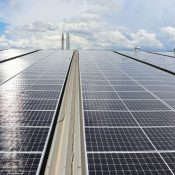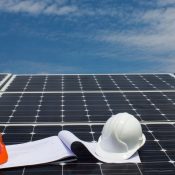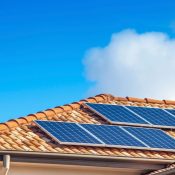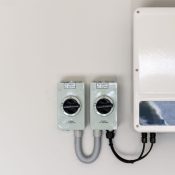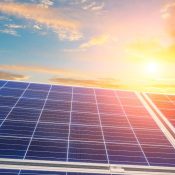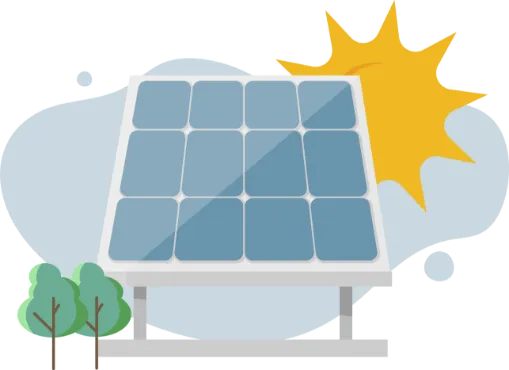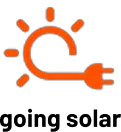How to Connect Solar PV to Your Domestic Electrical Supply?
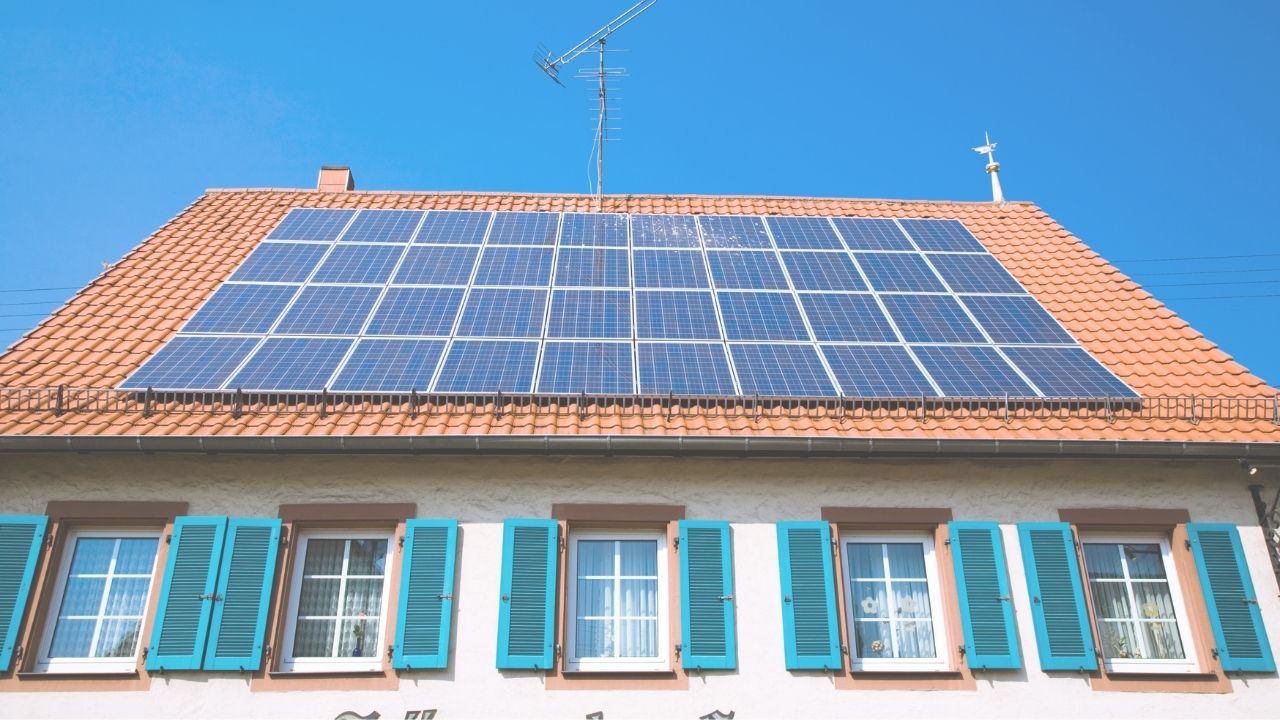
Are you wondering how you can harness the power of the sun to power your home? Solar energy, a clean and renewable source of power, is becoming increasingly popular for domestic use. Many homeowners are curious about how they can integrate solar photovoltaic (PV) systems into their existing electrical setup.
In this blog, we will guide you through the process of connecting a Solar PV system to your domestic electrical supply. We’ll cover everything from the basics of solar panel wiring to the intricacies of integrating the system with your home’s electricity. Whether you’re a DIY enthusiast or a newcomer to the world of renewable energy, this guide will provide you with the necessary insights to embark on your solar energy journey.
Join us as we explore the sustainable world of solar power, helping you reduce your carbon footprint and energy bills.
What Are the Components of a Solar PV System?
Let’s explore the components of a Solar PV System. Understanding these components is key to a smooth connection process.
Solar Panels:
These are the hearts of your solar system. They capture sunlight and turn it into electricity. Think of them as large, flat devices that you often see on roofs.
Inverter:
This device is crucial because it converts the electricity from the solar panels (which is direct current, or DC) into the type of electricity your home uses (alternating current, or AC).
Batteries (optional):
Batteries can store the electricity generated by your solar panels for use when the sun isn’t shining, like at night or on cloudy days. They are not always necessary, especially if your system is connected to the electricity grid.
Connection Cables:
These are the wires that connect all the parts of your solar system together. They carry electricity from the solar panels to the inverter and then into your home.
Charge Controller (for systems with batteries):
This device helps manage the electricity going into and out of the batteries, ensuring they don’t get overcharged or drained too much.
Mounting Equipment:
This includes all the racks and supports that hold your solar panels in place, whether on your roof or on the ground.
Electrical Disconnects:
These are safety devices that allow you to cut off the flow of electricity from your solar panels, which is essential for maintenance or emergency situations.
Each of these components plays a vital role in ensuring that your solar PV system works efficiently and safely.
In the next sections, we’ll look at how these components come together to create a fully functional solar power system for your home.
How to Troubleshoot Common Wiring Issues in Solar Panels?
After learning about the parts of a Solar PV System, let’s talk about how to connect the solar panels together. This process is called wiring.
Connecting Panels Together:
You can connect solar panels in two ways: in a line (series) or side-by-side (parallel). In a series, you join the end of one panel with the start of the next one. This way, the voltage adds up, but the current stays the same. In parallel, you join all the ends together and all the starts together. This keeps the voltage the same but increases the current.
Using MC4 Connectors:
Most solar panels have special connectors called MC4 connectors. They help you connect the panels easily. You just have to join the connectors from one panel to the next.
Connecting to the Inverter:
After connecting all your panels, you need to connect them to the inverter. This is where the electricity changes from DC to AC, which your house can use.
Safety First:
Always make sure everything is off when you’re connecting the panels. This is to avoid any accidents with electricity.
How to Avoid Common Pitfalls in Solar Panel Mounting?
Putting up solar panels is a big part of setting up your Solar PV System. Here’s what you need to keep in mind for mounting and staying safe:
Choosing the Right Place:
Pick the best place on your roof where the panels will get lots of sunlight. Make sure there’s no shade covering them.
Using the Right Mounting
Use strong frames and supports to hold your panels in place. They should be able to withstand wind and rain.
Safety Equipment:
If you are going up on the roof, you need to use safety gear. This includes things like a sturdy ladder, safety ropes, and a helmet.
Getting Help:
If you’re not sure how to safely install the panels, it’s a good idea to ask for help from a professional. They know how to do it safely and correctly.
Remember, the main goal is to set up your solar panels in a way that is safe for you and your home. Taking care of these details will help ensure that your solar system works well and lasts for a long time.
Understanding the Grid Connection for Your Solar Panels
Connecting your solar panels to the electricity grid is a critical component of the installation process. This section will provide insights into the grid connection process and its different aspects.
On-Grid vs Off-Grid Systems
When connecting solar panels to your home’s electricity, you have two primary options: On-Grid and Off-Grid systems.
On-Grid Systems
On-Grid systems are connected to the local electricity grid. Your solar panels may produce more electricity than your home uses. With an On-Grid system, you can earn credits on your electricity bill (net metering).
Off-Grid Systems
Off-Grid systems are not connected to the electricity grid. Instead, they rely on batteries to store the electricity your solar panels produce. This stored energy is used when the panels are not producing electricity, such as at night or on cloudy days.
Net Metering and Feed-in Tariffs
If you opt for an On-Grid system, understanding net metering and feed-in tariffs is essential.
Net Metering
Net metering allows you to receive credit for the excess electricity your solar panels generate and feed back into the grid. This credit can offset the electricity you draw from the grid when your panels are not producing enough power.
Feed-in Tariffs
Some locations offer feed-in tariffs, paying you for the electricity you feed into the grid. This can be an additional source of income and help offset the initial costs of your solar installation.
Grid Connection Process
Connecting your solar panels to the grid requires coordination with your local utility company and adherence to specific regulations and standards.
Initial Assessment and Approval
Before connecting to the grid, an initial assessment is conducted to ensure your system complies with local regulations. You will need to seek approval from your utility company.
Installation and Inspection
Once approved, your solar system will be installed and connected to the grid. Inspections are usually required to ensure the installation meets all safety and regulatory requirements.
Activation
Your system will be activated once the inspection is passed, and you can start generating solar energy.
How to Connect Solar Energy with Your Domestic Electricity?
After setting up your solar panels and making sure they’re safe on your roof, the next step is to connect them to your house and possibly the electricity grid. This is how you use the power your panels make:
From Solar Panels to Inverter:
Once you connect the solar panels to the inverter, the device changes the solar power into electricity that your house can use.
Connecting to Your Home:
The inverter then connects to your home’s power system. This lets the electricity from your solar panels power your lights, fridge, TV, and other things in your house.
Grid Connection (Optional):
If your system is designed to share power with the electricity grid (this is common), a professional will need to make this connection. This lets you send any extra electricity you don’t use back to the grid, sometimes even earning you credits on your electricity bill.
How to Connect Inverter to Solar Panels?
The inverter is a key part of your solar system. It changes the type of electricity your solar panels make into the type your house can use.
Where to Put the Inverter:
Usually, the inverter is placed near your main electrical panel. This helps make the connection to your home’s electrical system easier.
Connecting the Inverter:
Once it’s in place, the wires from your solar panels connect to the inverter. Then, the inverter connects to your home’s power system.
Setting it Up Right:
It’s important to make sure the inverter is installed correctly. The wrong setup can cause problems with your electricity. It’s often best to have a professional do this to make sure it’s done right.
How to Maximise Solar Power with Effective Battery Storage?
Solar Storage and Batteries:
Batteries are an optional part of your solar system. They store the electricity your solar panels make for later use, like at night or on cloudy days when the panels aren’t making electricity.
Choosing Batteries:
If you decide to use batteries, pick the right type and size for your needs. This depends on how much electricity you use and how much your panels make.
Connecting Batteries to the System:
The batteries connect to the charge controller, which is connected to your solar panels. The charge controller makes sure the batteries charge correctly and don’t get damaged.
Using the Stored Power:
When your panels aren’t making electricity, your home can use the power stored in the batteries. This is really helpful if you want to use solar power all the time, even when there’s no sun.
Each of these steps is important to make sure your solar PV system works well with your home and possibly the electricity grid. A good setup means you can enjoy solar power safely and effectively.
How to do Testing and Finalising the Connection?
After you have connected everything, the next step is to make sure it all works correctly. This part is about testing and finalising your solar system connection.
Checking the Connections:
First, look over all the connections you made. Make sure everything is tight and in the right place. This includes checking the connections at the solar panels, inverter, and any batteries.
Using a Multimeter:
A multimeter is a tool that measures electric current, voltage, and resistance. Use it to test the solar panel output. You want to make sure the panels are producing the right amount of electricity.
Testing the System:
Turn on the system and check if the inverter is working properly. The inverter should show how much power is being produced. If you have batteries, check to see if they are charging.
Final Safety Check:
Do a final safety check. Make sure all electrical parts are covered and safe to touch. This is to prevent any accidents.
Seeking Professional Help:
If anything seems wrong or you’re not sure about the readings, it’s best to ask a professional for help.
How to Ensure Compliance and Regulations?
Making sure your solar PV system follows local rules and standards is very important. This is about compliance and regulations.
Understanding Local Rules:
Different places have different rules about solar systems. This can include how you connect to the grid, safety standards, and inspections. It’s important to know and follow these rules.
Getting Permits:
Often, you need permits to install and use a solar PV system. This usually involves getting your system checked by local authorities to make sure it’s safe and meets standards.
Working with Professionals:
Professionals like electricians can help make sure your system follows all the rules. They know about the local regulations and can help with permits.
Regular Maintenance:
Following the rules also means keeping your system in good shape. Regular checks and maintenance help keep it safe and working well.
Staying Updated:
Rules and standards can change. It’s good to stay updated on any new requirements or changes in the solar industry.
By following these steps, you can ensure that your solar PV system is not only efficient and safe but also compliant with all necessary regulations and standards.
Why Choose Us for Connecting Solar Panels to Your Home’s Electricity?
Going Solar is the ultimate partner for all your solar panel installation needs in Ireland. Here’s why:
Expert Consultation and Customised Solutions
Our team at Going Solar consists of seasoned experts in solar technology. We provide free consultation services to understand your needs and customise solar solutions tailored to your home.
High-Quality Solar Panels and Components
Going Solar is committed to quality. We source the highest-grade solar panels and components to ensure your installation is durable and efficient. Our products come with extended warranties, ensuring long-term peace of mind.
Professional Installation
Precision and expertise are at the core of our installation process. Our certified technicians ensure that every solar panel is installed with the utmost accuracy, adhering to the highest safety and efficiency standards.
Comprehensive Customer Support
At Going Solar, our relationship with customers goes beyond installation. We offer comprehensive customer support, ensuring that you have expert assistance at every step, from initial consultation to post-installation maintenance.
Contribution to Sustainable Living
By Going Solar, you are not just opting for savings on your electricity bills; you are also contributing to a sustainable environment. Our solar solutions help reduce carbon emissions and promote renewable energy sources.
Licencing and Permit Assistance
The paperwork involved in solar installations can be daunting. Our team at Going Solar assists you in obtaining all necessary permits and ensures that your solar installation complies with all local regulations and standards.
Financing Options
We understand that the initial cost can be a barrier for many homeowners. Going Solar offers various financing options to make solar installation affordable. Our team will guide you through the prospects for a plan that suits your budget.
A Trusted Local Brand in Ireland
Going Solar is a well-established and trusted brand in Ireland. Our vast portfolio of successful installations and many satisfied customers testify to our impeccable service and commitment to excellence.
Conclusion
We’ve covered the key steps for connecting a Solar PV system to your home’s electricity. From understanding simple components like solar panels and inverters to the straightforward process of wiring and safe mounting,. We also discussed the important steps of testing your setup and making sure it meets local rules.
With this knowledge, you’re ready to take advantage of solar energy, an eco-friendly and cost-saving power choice for your home. Interested in going solar? Head over to Going Solar for more information and support on your journey to a brighter, greener future. Let’s make the switch to solar together!
Planning a switch to solar energy?
Contact Going Solar now and Get Free Advice & Quote Within Minutes!
Frequently Asked Questions
Contact Going Solar Now!
Joe Brennan
Founder @ Going Solar
Joe Brennan, the founder of Going Solar, is dedicated to making solar power mainstream in Ireland and meet SEAI objectives. With a focus on affordability and sustainability, he is bringing renewable energy solutions to homes, reducing costs & environmental impact.
Recent Posts

